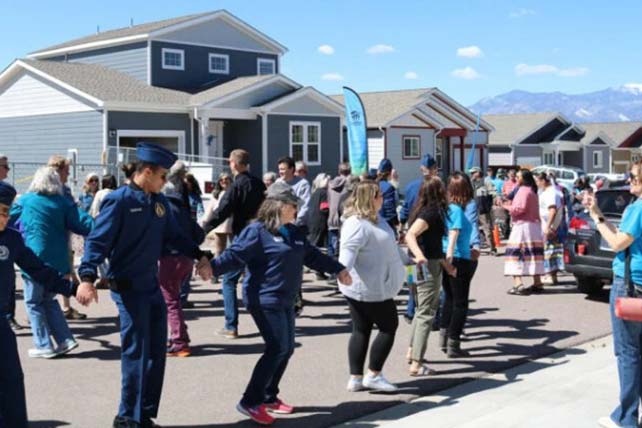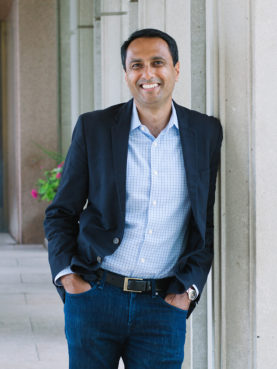The idea is to address the nation’s divisions by inviting people to build friendships as they serve together to meet community needs. For Habitat, that will likely involve more intentional community building on the worksite and an increased focus on interfaith cooperation.
Reckford said Habitat’s core Christian identity and its commitment to interfaith work go hand in hand. Faith in God is at Habitat’s center — but God is “not a border” to keep others out.
That deep faith, he said, allows Habitat to be “radically inclusive” and to welcome anyone who wants to lend a hand.
RELATED: The Ministry of Property Management – Atlanta Housing
“We should not have to give up what has made Habitat successful in order to be joyfully welcoming of others,” he said.
Reckford suspects that community service will become increasingly important for churches and other faith groups in the future, as people become more skeptical of organized religion. Habitat, he said, was born in church basements and grew by tapping into the energy and faith of people who were already church members. Now many churches will have to reach out to people who aren’t part of their community to continue their ministry, he said.
“In our increasingly unchurched culture, community service is going to be the front door for more and more faith communities,” he said. “The first invitation might be ‘Come to serve with me’ rather than ‘Come worship with me.’”
Eboo Patel, president of Interfaith America, said his organization’s work was shaped in part by his experience working on an overseas Habitat for Humanity project in Hyderabad, India, in the early 2000s. Interfaith America — then known as Interfaith Youth Core — was just getting off the ground and Patel and others volunteered on a project in a city that had experienced religious violence.
And yet, on that project, Hindus, Muslims and Christians worked side by side.
Eboo Patel. Photo courtesy of Interfaith America
The experience left Patel convinced of the power of service as “a common table for interfaith conversations,” he said. As he looked further into Habitat’s history, he learned the group’s late founder, an Alabama lawyer named Millard Fuller, began the work in part so his Christian friends could get along.
“Millard Fuller’s original vision was: Hey, my evangelical and mainline friends can’t even talk about Jesus because it just leads to an argument,” Patel said. “But we can serve together.”
That ecumenical approach to working together naturally led to interfaith work, said Patel. The idea of helping your neighbors, he said, is common among many faiths. No matter what they believe about God, each faith has its own version of the theology of the hammer. There’s something “extra sacred” when people of different faiths work together for the benefit of others, according to Patel.
“Everyone has a story to share,” he said. “You’ve opened up what we called mutually enriching conversations between people of different faiths.”
This past weekend, Pikes Peak Habitat for Humanity, based in Colorado Springs, dedicated its second interfaith-build house, which brought together Christians, Jews, Muslims and Buddhists, along with a Native American group.
“We try to pair two faith congregations together from different traditions so that they have the opportunity while on the construction site for the day to get to know one another,” said Chloe Henry, the Faith in Action program manager for Pikes Peak Habitat.
Pike’s Peat Habitat has also organized an interdenominational Christian house build as well as interfaith dialogue events where people can talk about how their faith inspires them to care about affordable housing. This past year’s interfaith event focused on the topics of increasing Black homeownership and on building a community where everyone belongs.


